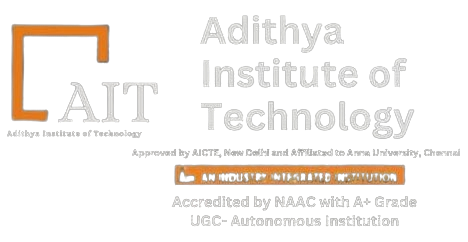ECE – Lab Facilities
COMMUNICATION SYSTEM LAB:
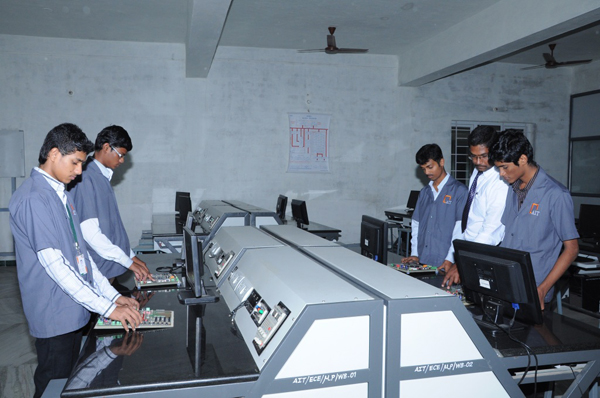
The Communication Laboratory covers design and verification of the concepts of modern digital communication systems that operates from MHz-GHz range. The lab includes experiments on applications of Digital coding and modulation techniques. This lab is equipped with Oscilloscopes, Function Generators, and Modules for Digital Modulation and Demodulation techniques and Power Supply units.
—————————————————————————————————————————————————————————————————————
COMPUTING LAB:

The computing lab is a part of our ECE & EEE Department. Our lab has 24 hours internet facility so the students can use the systems based on their requirements and convenience.This lab is also used for providing skillset training to the students where the students would be trained by professional Trainers.Our college is one of very few colleges which has introduced LMS – Effective way of teaching learning process.In this lab the students are made to take LMT tests.The students can also view the contents loaded in LMS.
—————————————————————————————————————————————————————————————————————
DIGITAL ELECTRONICS LAB:
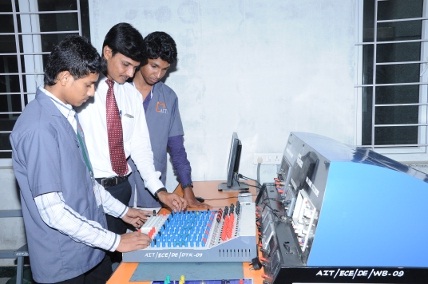
This lab is designed such that the students get hands on familiarity with the concepts they come across in the course EC6301 Digital Electronics. This is an undergraduate course which deals with the basics of digital systems design. The Lab is well equipped with both hardware and software facilities required by the students to perform the necessary experiments designed for this lab. Experiments are designed in such a way that the students become well aware of the concepts they learn in the theory sessions.
—————————————————————————————————————————————————————————————————————
DIGITAL SIGNAL PROCESSING LAB:
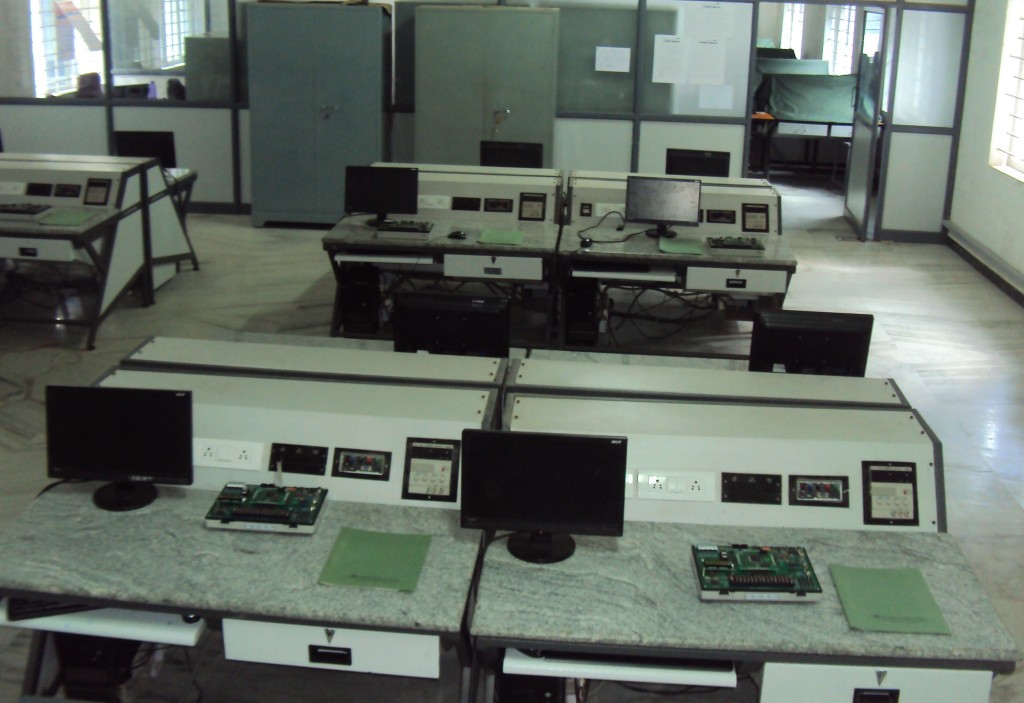
To introduce the student to various digital Signal Processing techniques using TMS 320c5x family processors and MATLAB.
To implement the processing techniques using the instructions of TMS320C5X Processors.
To know the MATLAB program to generate a following standard input signals
(i)Unit step,
(ii) Unit impulse ,
(iii) Unit ramp,
(iv) Sinusoidal signal,
(v)Saw tooth wave,
(vi) Square wave,
(vii) Exponential signal and plot their response in Discrete and continuous time domain.
—————————————————————————————————————————————————————————————————————
ELECTRONIC CIRCUITS LAB:
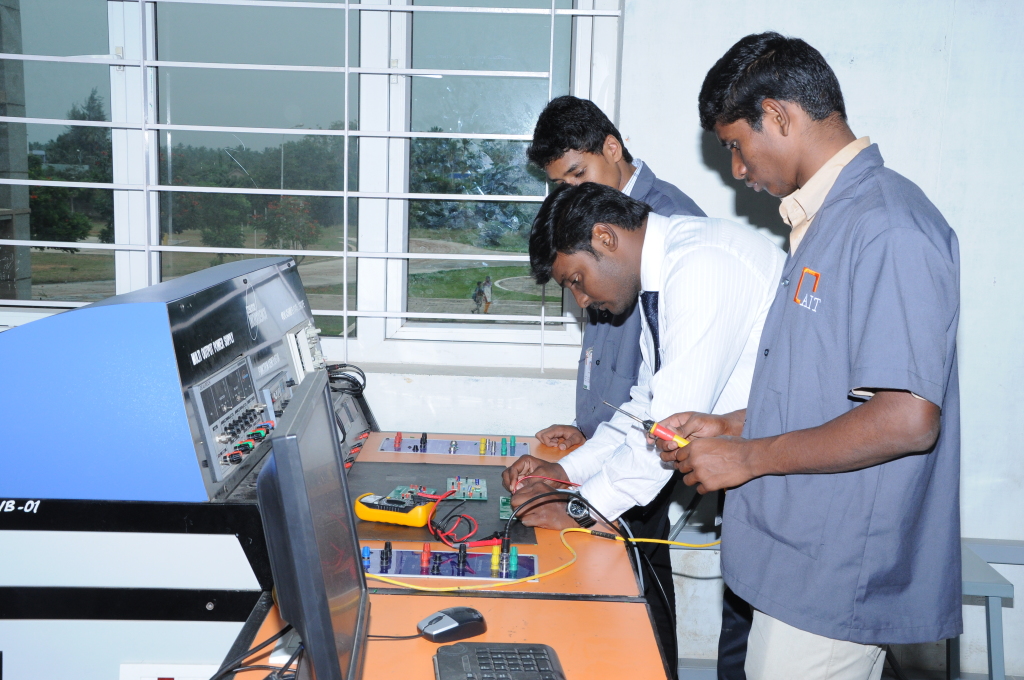
This laboratory is to impart the basic knowledge of different electronic components, its characteristics and devices, to gain practical knowledge in the area of power electronic components and their applications. Basic electronics is all about electrical components and the circuits consisting of those components. Common components are resistors, capacitors, inductors, transistors, and integrated circuits. The components are interconnecting with conductors, either physical wires or printed circuits. The components make up linear analog amplifiers, oscillators, and filters as examples. Students will also learn to practical, circuit design and contributes significantly to provide them with engineering skills. The experiments covered in this laboratory are synchronized with its theoretical part, so that students might be able to understand the practical aspects of it.
—————————————————————————————————————————————————————————————————————
Linear Integrated Circuits Lab:
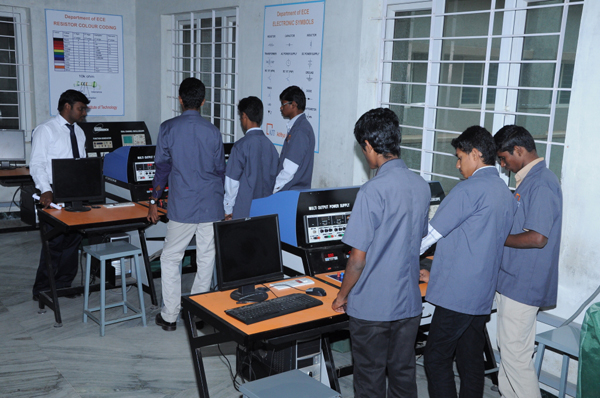
The main objective of this lab course is to gain the practical hands on experience by exposing the students to various linear IC applications. The lab also introduces to the students 555 timer and IC 741 and its applications, various voltage regulators. The testers for IC are available. This laboratory is fully equipped with major equipment’s like Linear and Digital Trainer kits, Cathode Ray Oscilloscope, Function Generator, and Simulator.
—————————————————————————————————————————————————————————————————————
MICROPROCESSOR AND MICROCONTROLLER LAB:
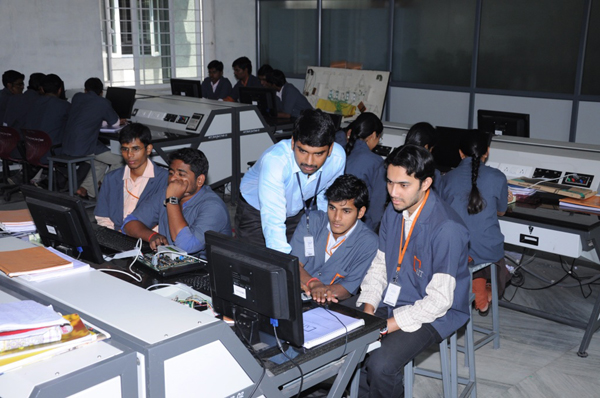
Microprocessor laboratory is equipped with microprocessor kits and interfacing devices.The students achieve encoding skills in Assembly Language and Interfacing with various devices.The students have in depth knowledge in writing and executing 8086 8085 and 8051 Assembly Language programs.
—————————————————————————————————————————————————————————————————————
MICROWAVE AND OPTICAL LAB:

This is an undergraduate course which deals with the basics of Microwave and Optical Communication.To gain insight of fiber optic components, in the area of optical communication. Also, gain knowledge about various microwave components with regard to communication.Students able to analyze regarding waveguides and transmission lines.Students able to describe, analyze and design simple microwave circuits and devices e g matching circuits, couplers, antennas , amplifiers various types of TEES and Directional Couplers.
—————————————————————————————————————————————————————————————————————
Network laboratory:
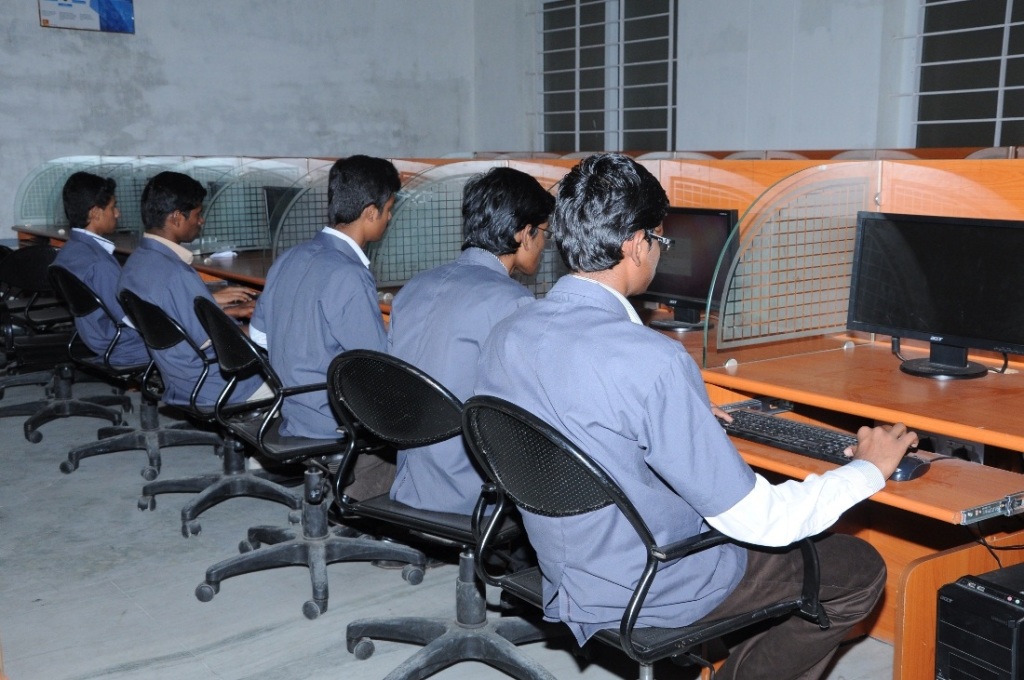
Network laboratory is designed & developed considering the curriculum offered by Anna University.Trainer kits utilized in the network laboratory are designed for students at all level to study and understand all the concepts of data communication, data transfer using serial and parallel ports, Ethernet and wireless LAN with complete protocol understanding and actual hands on with hardware & software with ease.
—————————————————————————————————————————————————————————————————————
Simulation Laboratory:
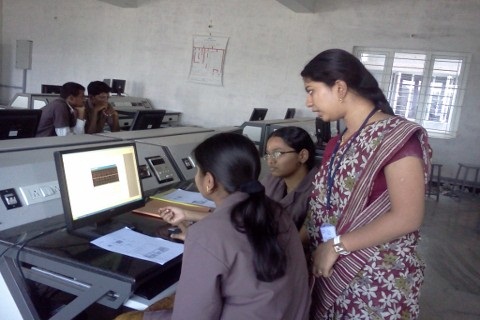
Internet connectivity in all Systems.
Electrical Transient Analysis Program (ETAP) Software
Matlab Simulation Software
VisualStudio .NET 2005.
A computer simulation is an attempt to model a real-thing on a computer so that it can be studied to see how the system works.
—————————————————————————————————————————————————————————————————————
VLSI Laboratory:

The goal of the course is to introduce architecture and design concepts underlying modern complex VLSIs and system-on-chips. The lectures build upon students prior knowledge of digital circuits, digital logic, and computer architecture concepts to teach how complex chip-scale systems can be designed.

